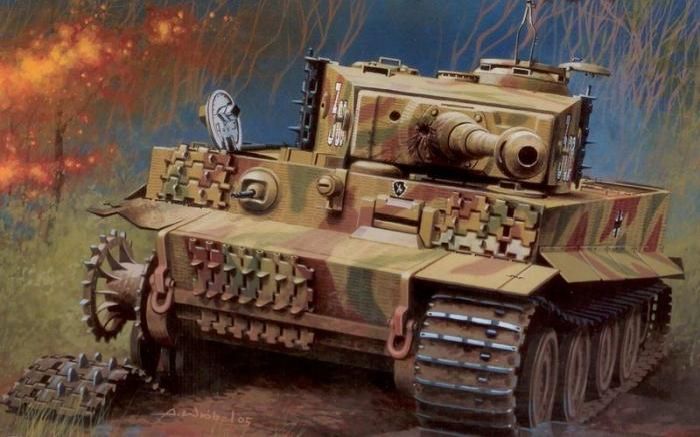|
|
Tank Drawing
|
Germany, Italy and the Soviet Union all experimented heavily with tank warfare during their clandestine and “volunteer” involvement in the Spanish Civil War, which saw some of the earliest examples of successful mechanised combined arms — such as when Republican troops, equipped with Soviet-supplied medium tanks and supported by aircraft, eventually routed Italian troops fighting for the Nationalists in the seven-day Battle of Guadalajara in 1937.
• World War II
World War II was the first conflict where armoured vehicles were critical to success on the battlefield and in this period the tank developed rapidly as a weapon system. It showed how an armoured force was capable of achieving a tactical victory in an unprecedentedly short amount of time. At the same time, however, the development of effective anti-tank weaponry demonstrated that the tank was not invulnerable.
Prior to World War II the tactics and strategy of deploying tank forces underwent a revolution. Heinz Guderian, a tactical theoretician who was heavily involved in the formation of the first independent German tank force, said "Where tanks are, the front is", and this concept became a reality in World War II. Following the Invasion of Poland where tanks performed in a more traditional role in close cooperation with infantry units, in the Battle of France deep independent armoured penetrations were executed by the Germans, a technique later called blitzkrieg. Blitzkrieg made use of innovative combined arms tactics and radios in all of the tanks to provide a level of tactical flexibility and power that surpassed that of the Allied armour. The French Army, with tanks equal or superior to the German tanks in both quality and quantity, employed a linear defensive strategy in which the armoured cavalry units were made subservient to infantry as "support weapons". In addition, they lacked radios in many of their tanks and headquarters, which limited their ability to respond to German attacks.
|
|









